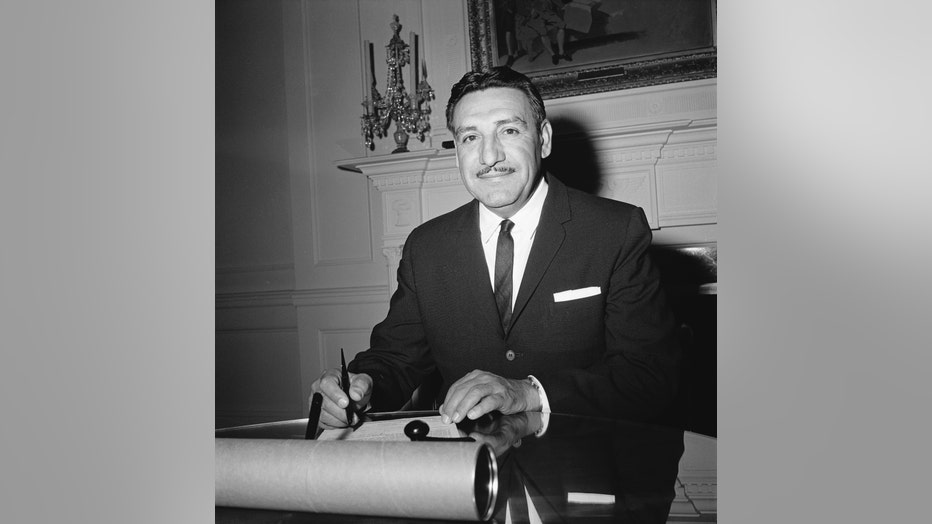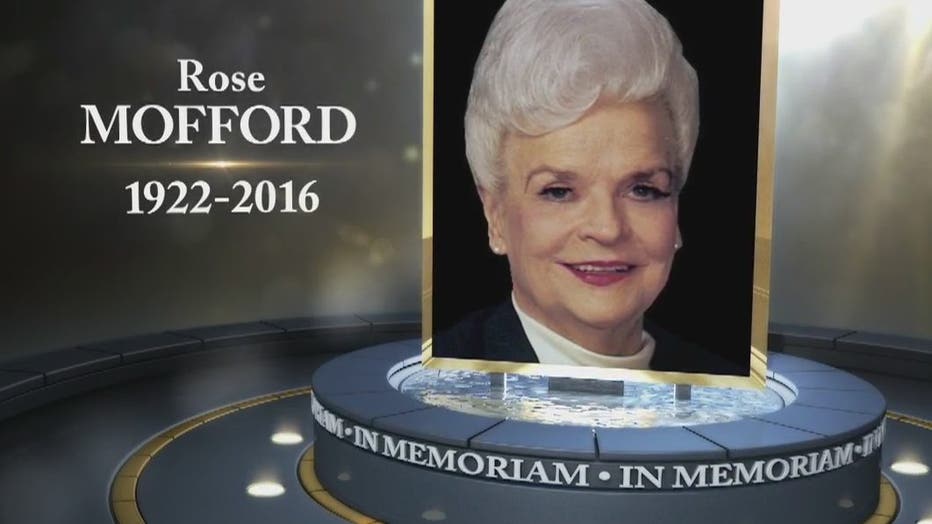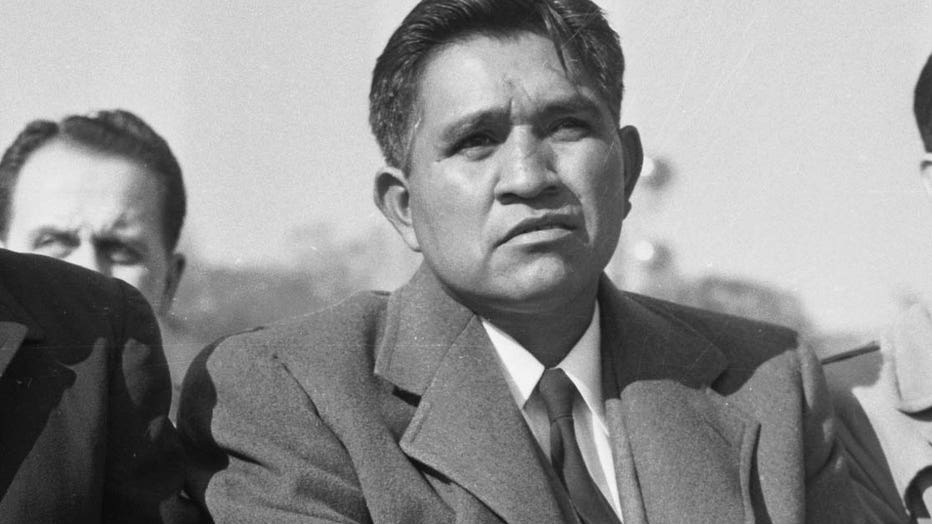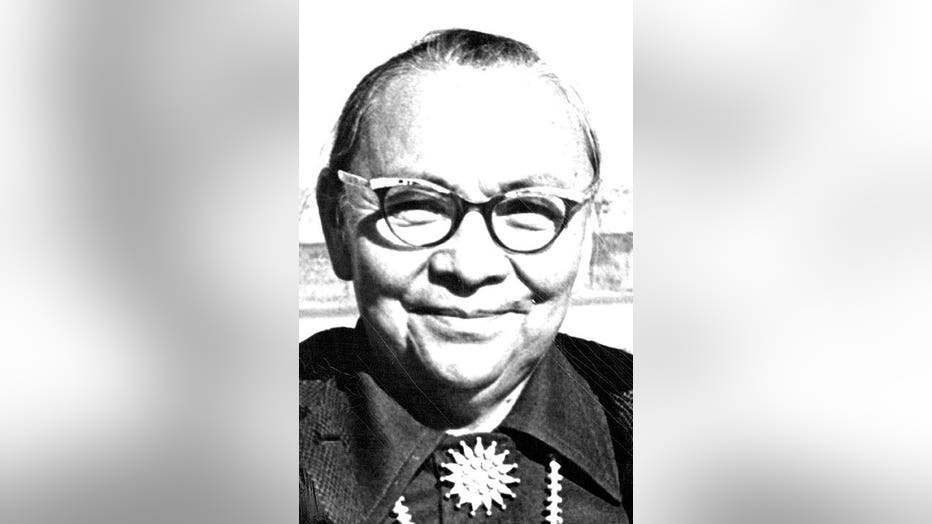Arizona picks senators, military for Trump's heroes garden

Arizona picks senators, military for Trump’s heroes garden
We have what you need to know about the governor's picks for the garden.
PHOENIX - A Native American U.S. Marine immortalized for helping raise the American flag over Iwo Jima during World War II. Two Arizona senators who were Republican nominees for president. The first female justice of the U.S. Supreme Court.
Those and other Arizona luminaries are among Republican Gov. Doug Ducey’s picks for a new National Garden of American Heroes. President Donald Trump announced the effort this summer, and his administration reached out to governors and the public for suggestions to add to his own list.
The list by the governor's office recommends three senators, two governors, military and civil rights heroes as well as two military units, including the Navajo Code Talkers. They used an unbreakable code in their Navajo language to communicate during battles in the Pacific during WWII.
Online: https://www.doi.gov/american-heroes
The others are:

FILE: Senator Carl Hayden (D.-Arizona) Ch., senate Appropriations Committee. (Getty photos)
— Sen. Carl Hayden: He was known as a workhorse of the Senate, where he represented Arizona from 1927 to 1959 after serving in the House since Arizona statehood in 1912. His efforts on the Central Arizona Project, a canal system that brings water from the Colorado River to Phoenix and Tucson, helped ensure the state’s growth. He announced his retirement in 1968 and died in 1972 at age 94.

FILE: 1964 Republican presidential candidate Senator Berry Goldwater (R) (Getty Photos)
— Sen. Barry Goldwater: He was born in Arizona three years before statehood and was elected to the U.S. Senate in 1952. He was the Republican nominee for president in 1964, defeated by Lyndon Johnson. He then ran for Arizona's other Senate seat in 1968 and won, serving until he retired in 1987. Goldwater died in 1998.

FILE: Republican presidential hopeful Senator John McCain addresses a press conference in Beverly Hills, California, May 28, 2008. (GABRIEL BOUYS/AFP via Getty Images)
— Sen. John McCain: The son and grandson of Navy admirals was imprisoned after his Navy jet was shot down over North Vietnam in 1967. He moved to Arizona after marrying Cindy McCain and retiring from the military. He won a seat in Congress in 1982, then won Goldwater's old Senate seat in 1986. He was the Republican nominee for president in 2008 but lost and remained in the Senate until his death in 2018.

FILE: Associate Justice of the Supreme Court of the United States (Ret.) Sandra Day O'Connor poses before receiving the prestigious Anam Cara Award at the Irish Cultural Center on January 16, 2014 in Phoenix, Arizona. (Photo by Mike Moore/WireImage)
— Sandra Day O’Connor: She was the first female U.S. Supreme Court justice, appointed by President Ronald Reagan in 1981. She had previously been a judge and a state senator. She retired from the court in 2006. The 90-year-old announced in 2018 that she had dementia and was stepping back from public life.

FILE: Raul Castro became a naturalized citizen in 1939, and was a former judge of the Arizona Superior Court. On Oct. 26, 1964, he took the oath of office as U.S. Ambassador to El Salvador. (Getty Photos)
— Raul Castro: Arizona's only Hispanic governor served for 2 1/2 years after winning election in 1974. He was born in Mexico and came to Arizona as a young man, earning a law degree and serving as Pima County attorney and a judge. He was ambassador to El Salvador and then Bolivia in the 1960s, resigning as governor to become ambassador to Argentina. He died in 2015 at age 98.

— Rose Mofford: She became Arizona's first female governor when Republican Gov. Evan Mecham was impeached and removed from office. The Democrat had been serving as secretary of state at the time and inherited a big budget deficit and criticism over the state refusing to adopt a Martin Luther King. Jr. holiday. Mofford was governor from 1988 to 1991, declining to run for a full term. She died in 2016 at age 94.

FILE: Arizona Cardinals defensive back Pat Tillman smiles during the pregame. (Photo by Gene Lower/Getty Images)
— Pat Tillman: The Arizona State University and Arizona Cardinals linebacker gave up a lucrative pro contract after the Sept. 11 terror attacks and joined the Army. He was killed in Afghanistan in 2004 in a friendly fire incident at age 27.
— Lincoln Ragsdale: He was a member of the Tuskegee Airmen in World War II and a prominent Black businessman and civil rights leader in Phoenix after the war. He died in 1995 at age 68.

FILE: The statue of American fighter pilot Frank Luke Jr. in Phoenix, Arizona, circa 1962. (Photo by Archive Photos/Getty Images)
— Frank Luke: Luke was an ace World War I fighter pilot who died in 1918 at age 21 after being wounded in flight. He was awarded the Medal of Honor posthumously. Luke Air Force Base in Glendale is named after him.

FILE: Ira Hayes of Sacaton, Arizona, a Pima Indian with the Bureau of Indian Affairs, was one of the six men who raised the American flag atop Mt. Suribachi. (Getty Photos)
— Ira Hayes: A Pima Indian from Sacaton, he was one of six Marines shown in Associated Press photographer Joe Rosenthal's famous “Raising the Flag on Iwo Jima” photo in February 1945. He later suffered post-traumatic stress disorder and alcoholism and died in 1955 at age 32.

FILE: Secretary of the Interior, Stewart L. Udall pictured in Washington D.C. (Getty Photos)
— Stewart Udall: He was elected to Congress in 1954, and President John F. Kennedy named him secretary of Interior in 1961. He served in the post until the end of President Lyndon Johnson's term in 1969, overseeing major efforts including the Wild and Scenic Rivers Act and the expansion of the National Park system. He died in 2010 at age 90.

FILE: FEB 10 1964 - Annie Wauneka Leads fight for Littell. (Denver Post via Getty Images)
— Annie Dodge Wauneka: She was the second woman elected to the Navajo Nation Council and worked to improve health and education within the tribe. She was awarded the Presidential Medal of Freedom in 1963. She died in 1997 at age 93.

FILE: Buffalo Soldiers of the 25th Infantry. Christopher Barthelmess, William A Gladstone Collection of African American Photographs, 1890. (Photo by: Glasshouse Vintage/Universal History Archive/Universal Images Group via Getty Images)
— The Buffalo Soldiers: This group of Black U.S. Army cavalry unit soldiers was based across the Midwest and West after the Civil War and often assigned to Fort Huachuca in southern Arizona.

